DMM Bside ADM92
Image may be NSFW.
Clik here to view.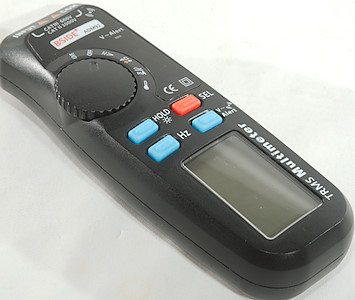
This meter has the shape of a clamp meter, but it a normal multimeter, that can also work as a pen meter
Image may be NSFW.
Clik here to view.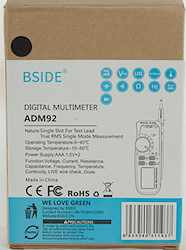 Image may be NSFW.
Image may be NSFW.
Clik here to view.
The meter is in a brown cardboard box with a label that shows the model and a few specifications.
Image may be NSFW.
Clik here to view.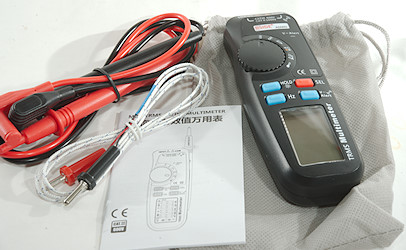
It included the DMM, a pouch, a pair of probes, a thermocouples and a instruction manual.
Image may be NSFW.
Clik here to view.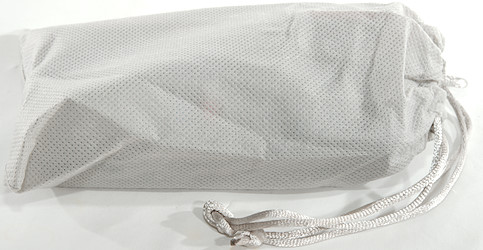
Everything could fit in the supplied pouch.
Image may be NSFW.
Clik here to view.
Image may be NSFW.
Clik here to view.
The thermocoupler is standard cheap K type with lose banana plugs.
Image may be NSFW.
Clik here to view.
Image may be NSFW.
Clik here to view.
Image may be NSFW.
Clik here to view.
Probes are branded with BSide and has removable tip covers. There is a CAT III 1000V rating on the cover, but none on probe.
Image may be NSFW.
Clik here to view.
The plug is fully shrouded and very close standard probe shroud size.
Image may be NSFW.
Clik here to view.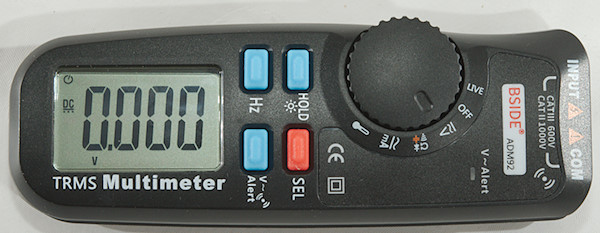
Image may be NSFW.
Clik here to view.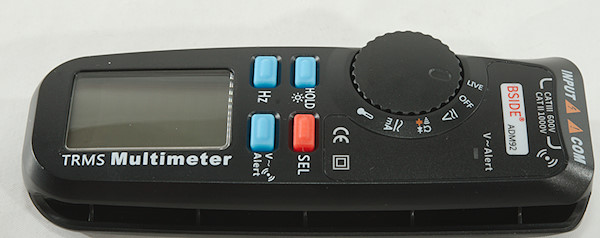
Image may be NSFW.
Clik here to view.
Image may be NSFW.
Clik here to view.
The slot at the side of the meter can hold one probe and the the meter works as a pen type meter.
Image may be NSFW.
Clik here to view.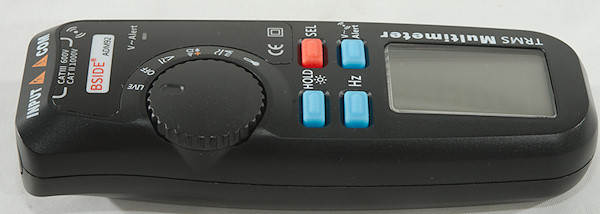
Image may be NSFW.
Clik here to view.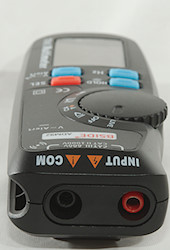 Image may be NSFW.
Image may be NSFW.
Clik here to view.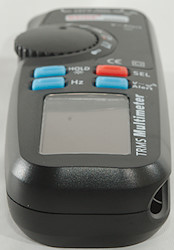
Image may be NSFW.
Clik here to view.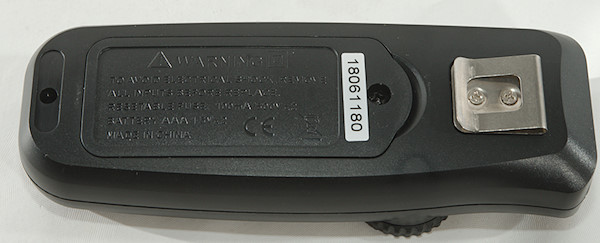
Image may be NSFW.
Clik here to view.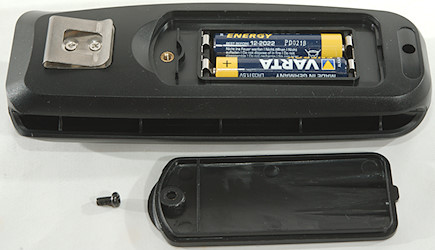
Image may be NSFW.
Clik here to view.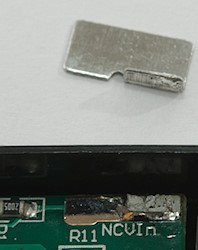
When I got the meter something was rattling inside it, it was the NCV antenna. I soldered it back in place before doing any testing.
It was probably not soldered good enough and fall off due to a bump during shipping.
Display
Image may be NSFW.
Clik here to view.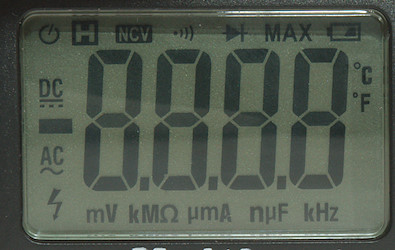
The above picture shows all the segments on the display, not all are used.
Image may be NSFW.
Clik here to view.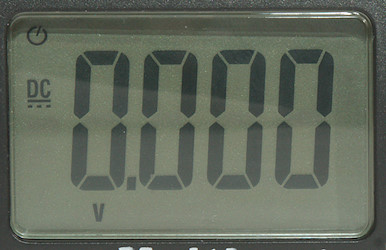
Typical display during usage, it will show the main number and what measurement is selected.
Image may be NSFW.
Clik here to view.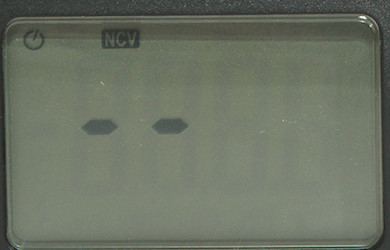
NCV has the usual bars on the display, together with a red led and the buzzer.
Image may be NSFW.
Clik here to view.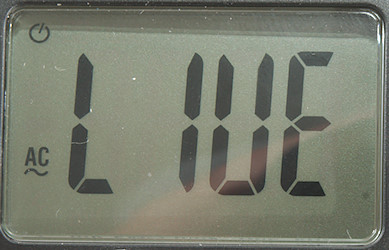
The LIVE function requires one probe, shows 4 bars when not connected and LIVE when touching a live wire. Buzzer and led is also used for this function.
Image may be NSFW.
Clik here to view.
The led for LIVE and NCV function is here.
Functions
Image may be NSFW.
Clik here to view.
Buttons:
- Hold: Freezes the display, hold down for backlight.
- Hz: Will change to frequency in AC ranges.
- SEL: Select between DC and AC and ohm, continuity, diode and capacitance. For temperature is will select between C and F.
- V Alert: Activates the NCV mode, works on any rotary switch position except off. Pressing again or turning the rotary switch will exit NCV mode.
Rotary switch:
- Live: Detect a live wire with one probe.
- Off: Meter is turned off
- V: Show DC or AC voltage.
- Image may be NSFW.
Clik here to view.![ohm]() : Resistance, continuity, diode and capacitance.
: Resistance, continuity, diode and capacitance. - mA: The two mA current ranges.
- Image may be NSFW.
Clik here to view.![Temp]() : Temperature.
: Temperature.
Input
Image may be NSFW.
Clik here to view.
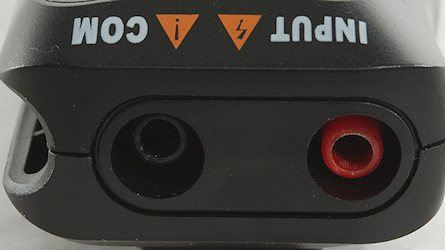
With only two input terminals all measuring functions are done with these.
For LIVE only the red is used.
Measurements
- Volt and frequency
- Frequency counter is only available on AC ranges
- Frequency input requires a zero crossing
- At 0.1Vrms input frequency range is from 10Hz to 5.6kHz
- At 1Vrms input frequency range is from 1Hz to 45kHz
- 1 VAC is 5% down at 2.3kHz (RMS will not work at the frequency).
- Input impedance is 10-11Mohm on DC and AC
- Rated overload protection is 1000VDC and 750VAC
- Frequency input resistance is same as voltage, except at very low voltages where it is high
- Frequency counter is only available on AC ranges
- Current
- mA do not have a fuse but uses some PTC’s
- Will show OL above 200mA
- mA do not have a fuse but uses some PTC’s
- Ohm, continuity, diode and capacitance
- Ohm needs about 2.8s to measure 100ohm
- Ohm is -1.1V open and -0.3mA shorted
- Continuity is quick (About 15ms).
- Continuity beeps when resistance is below 50ohm
- Continuity is -2.1V open and -0.3mA shorted
- Diode range uses 4.0V, max. display is 3.300V at 0.36mA, max. current is 2.1mA shorted
- 10uF takes about 2 seconds to measure.
- 9900uF takes about 9 seconds to measure.
- Rated overload protection is 600V DC or AC
- Ohm needs about 2.8s to measure 100ohm
- Miscellaneous
- Current consumption of meter is 1.5mA to 1.7mA, with backlight it is 5.2mA
- Meter works down to 2.2V where it turns off, battery symbol show at 2.3V.
- Meter readings are stable until it turns off.
- Backlight fades with voltage and is very dim at 2.5V
- The meter usual show correct reading on first or second display update.
- Viewing angle is good, except from top
- Display updates around 3 times/sec
- Backlight turn off after about 30 seconds.
- Will automatic turn power off in about 16 minutes.
- Banana plugs and standard probes fits nicely.
- Weight is 118g without accessories, but with batteries.
- Size is 140 × 49 × 33mm.
- Current consumption of meter is 1.5mA to 1.7mA, with backlight it is 5.2mA
- Probes
- Probe resistance 185mOhm for one.
- Probe wire is 78cm long.
- Probe resistance 185mOhm for one.
Image may be NSFW.
Clik here to view.

A look at the capacitance measurement waveform when measuring 1uF.
Image may be NSFW.
Clik here to view.
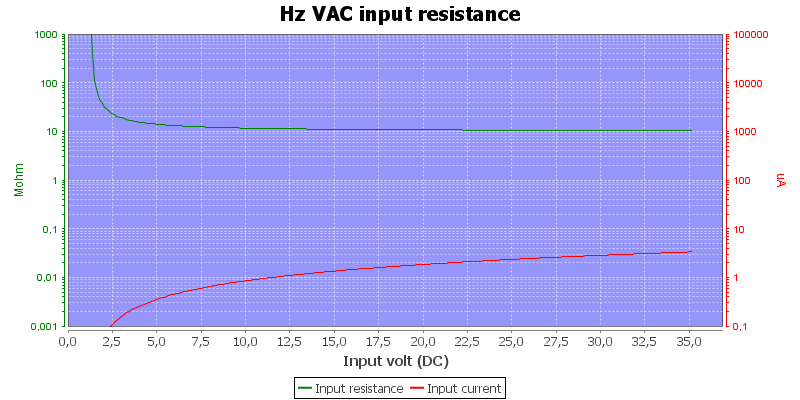
Frequency input resistance.
Image may be NSFW.
Clik here to view.

The 9.999uF range jumps up/down at the high end, but is within the 4% tolerance.
My 11000uF capacitor measures as 1134uF, i.e. 10 times below actual value.
High DC voltage will block for AC readings.
Tear down
Image may be NSFW.
Clik here to view.

To open the meter two screws must be removed, but one of the screws are behind the belt clip, this add two more screws for a total of four screws.
Image may be NSFW.
Clik here to view.
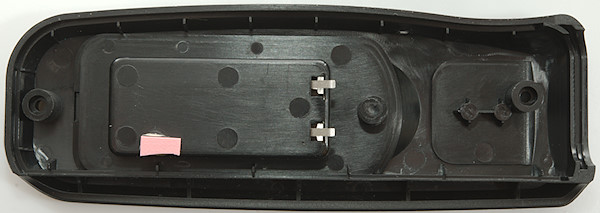
Image may be NSFW.
Clik here to view.
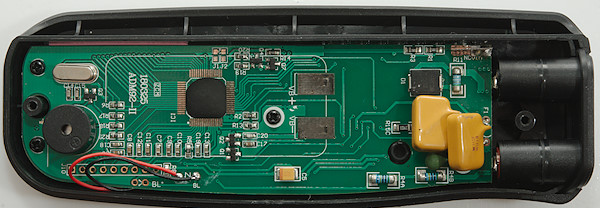
As usual the circuit board is shaped to fill the enclosure.
Image may be NSFW.
Clik here to view.

Image may be NSFW.
Clik here to view.
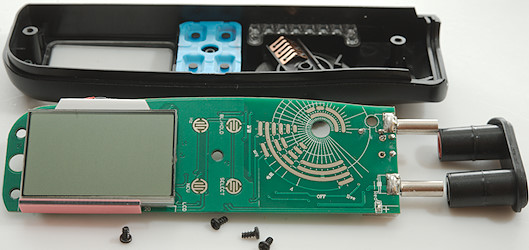
To get the circuit board out I had to remove four more screws.
Image may be NSFW.
Clik here to view.
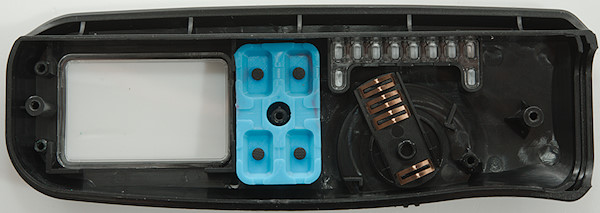
It looks like this enclosure is also used for meters with considerable more leds, when looking at the number of light pipes above the rotary switchs.
Image may be NSFW.
Clik here to view.

Current input uses the two PTC’s (F1 & F2) and a one ohm resistor with a TVS diode across. Voltage input uses two resistors (R4A & R4B: 2×5Mohm). Ohm output uses the green PTC (R10) and a transistor pair (Q1 & Q2) for protection. The ohm sense input is 3 resistors (R15A, R15B, R15C: 300k, 300k, 390k). Temperature uses same configuration as ohms.
Image may be NSFW.
Clik here to view.

Image may be NSFW.
Clik here to view.
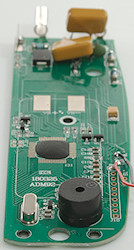 Image may be NSFW.
Image may be NSFW.Clik here to view.
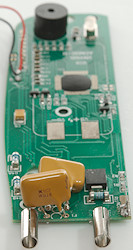
Image may be NSFW.
Clik here to view.

Image may be NSFW.
Clik here to view.

On this side is the pads for the buttons, the rotary switch and lcd in addition to the NCV led.
Image may be NSFW.
Clik here to view.

Conclusion
The meter has the normal functions, except current is a bit limited with only mA ranges. The shape is probably great when using the meter handheld, but on a table it is not as good.
Notes
The meter was supplied by BSide for review.
How do I review a DMM
More DMM reviews
About thermocouplers
My website with reviews of many chargers and batteries (More than 1000): https://lygte-info.dk/

